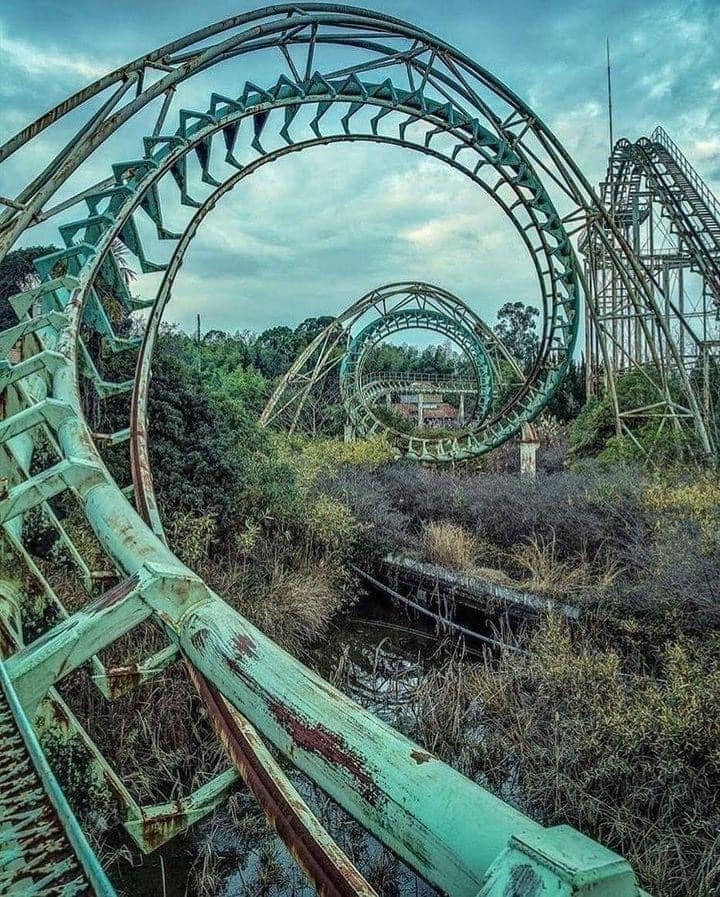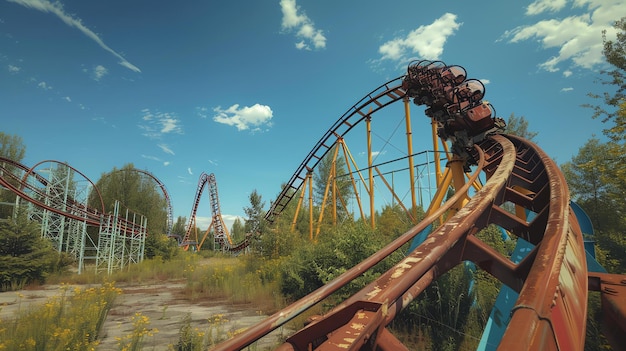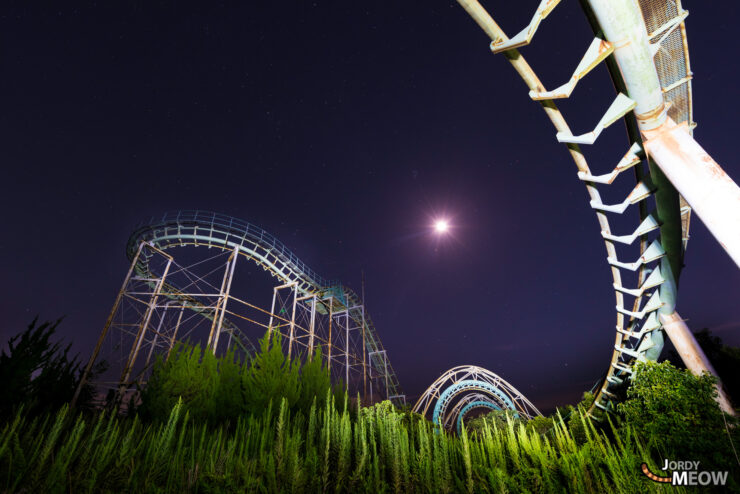Rusting Tracks of Abandoned Rollercoasters in Old Amusement Parks

Abandoned rollercoasters lie dormant, with their rusting tracks and towering structures standing as eerie reminders of amusement parks that once echoed with laughter. These forgotten rides, now covered in vines and slowly succumbing to decay, hold a unique allure for urban explorers and fans of forgotten places. From the remnants of Six Flags New Orleans to the hauntingly still tracks of Japan’s Nara Dreamland, each rollercoaster tells a story of glory days turned into ghostly silence.
The Allure of Abandoned Rollercoasters

Rollercoasters, once the heart-pounding attractions of amusement parks, are now ghostly skeletons dotting the landscape. The rusting tracks of these abandoned rollercoasters are symbols of past joy and the inevitable march of time. They inspire a mix of curiosity and nostalgia, drawing in photographers, history buffs, and thrill-seekers who seek to capture the melancholic beauty of these forgotten marvels. The derelict Zonga rollercoaster in California and the skeletal remains of Mirabilandia’s Sierra Tonante in Italy are just a few examples of these hauntingly beautiful structures.
Decay and Nature’s Reclamation

Over time, nature begins to reclaim these man-made structures. Trees, moss, and ivy weave through the metal supports, creating an almost surreal scene where nature battles with human engineering. In Nara Dreamland, a now-defunct park modeled after Disneyland, the iconic wooden tracks of the old coasters are nearly hidden beneath thick foliage. These forgotten rollercoasters, with their peeling paint and broken tracks, become striking testaments to the power of nature. The sight of rusting tracks peeking through dense undergrowth is both haunting and poetic.
A Journey Through Time: Famous Abandoned Rollercoasters

One of the most iconic abandoned rollercoasters in the United States can be found at Six Flags New Orleans, which was devastated by Hurricane Katrina in 2005. The storm left the park submerged, and its wooden coasters were battered beyond repair. The once vibrant Mega Zeph coaster now stands still, its rusted tracks twisted and overgrown, a haunting sight for those brave enough to explore the grounds.
Across the globe in Japan, the abandoned Dream Coaster at Kejonuma Leisure Land is another hauntingly beautiful example. The park was shut down in the late 1980s, and now, the rollercoaster tracks are cloaked in rust, surrounded by thick vegetation. The juxtaposition of man-made structures succumbing to nature creates a surreal experience for visitors, offering a glimpse into a world where time has stood still.
Why Do Rollercoasters Become Abandoned?

The abandonment of rollercoasters is often tied to financial struggles, natural disasters, or shifts in public interest. Some amusement parks, like Chippewa Lake Park in Ohio, closed due to declining visitor numbers, leaving behind their once-famous rides to rot. The cost of maintaining these towering structures, coupled with dwindling revenue, often leads to parks closing their gates for good. In some cases, parks are abandoned suddenly, leaving their coasters to rust in silence, as if frozen in time.
Exploring Abandoned Amusement Parks: A Risky Adventure

For urban explorers, visiting the rusting tracks of abandoned rollercoasters is both a thrilling and dangerous pursuit. These forgotten parks are often filled with structural hazards, broken glass, and unstable walkways. Yet, the thrill of walking among the decaying tracks of coasters like Sierra Tonante or Mega Zeph is a draw too strong to resist. The eerie silence, combined with the whispers of a once-thriving amusement park, offers a unique and unforgettable experience.

In the end, abandoned rollercoasters stand as haunting tributes to the excitement and joy they once brought. The rusting tracks and skeletal remains of these rides invite us to reflect on the passage of time and the impermanence of human endeavors.